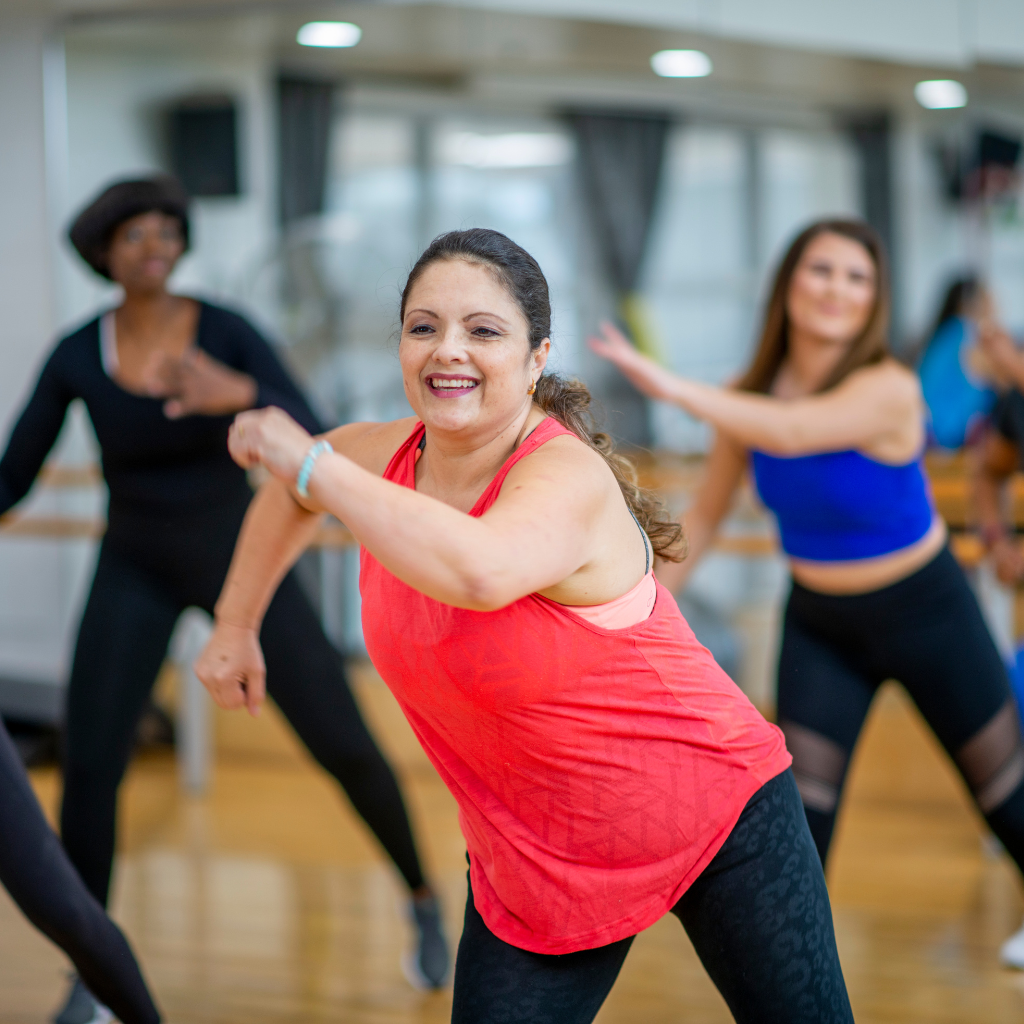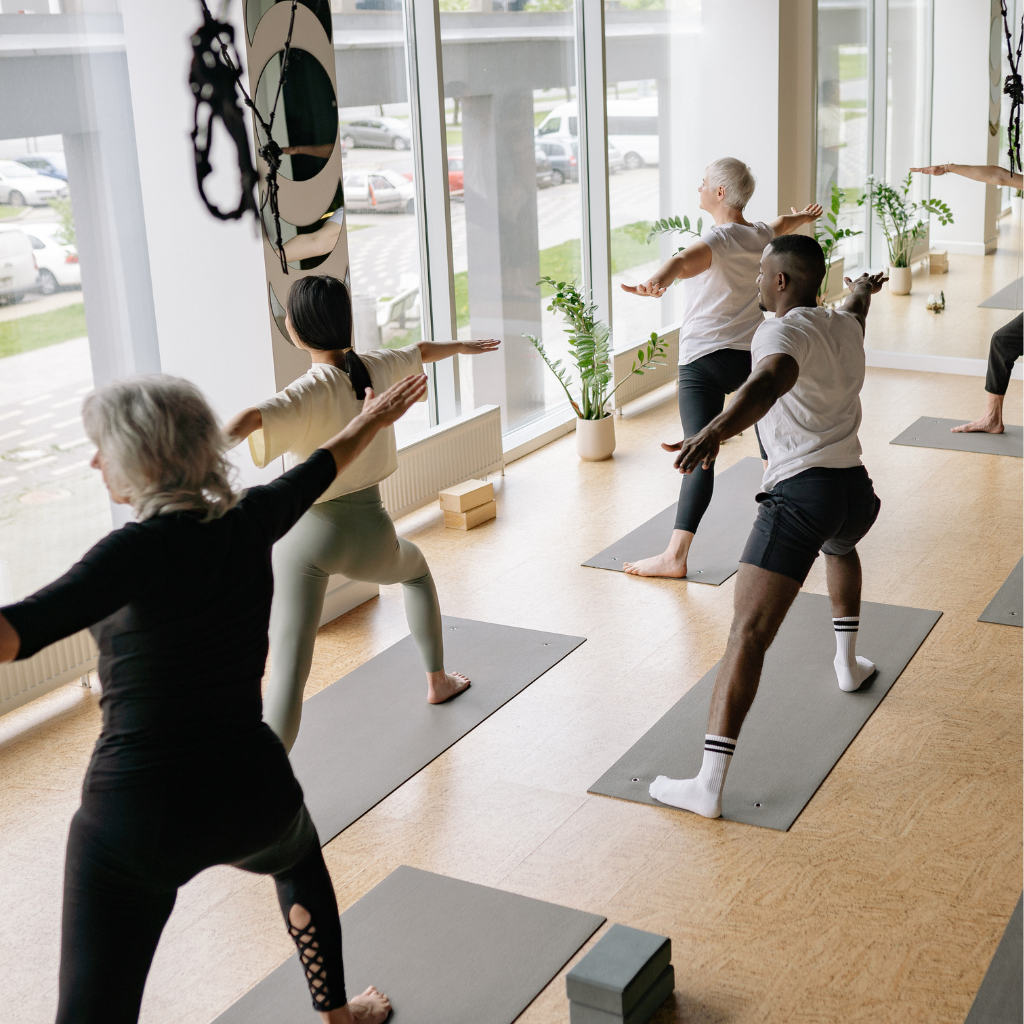Written by Dr. Marci L. Hardy, PhD, MA
Our bodies are designed for movement. From our ancestors hunting and gathering to our daily activities, movement is fundamental to our well-being. But in today’s technology-driven world, we often move less, leading to increased rates of chronic conditions. However, daily movement isn’t just about physical health; it’s also crucial for a healthy brain. In fact, research demonstrates that regular physical activity is associated with a reduced risk of developing dementia and Alzheimer’s disease.1,2

What are the brain-boosting benefits of movement?
Physical activity is a powerful tool for maintaining brain health, especially as we age. It offers several key benefits, including:
Increased Blood Flow
Physical activity increases blood flow to the brain, delivering vital oxygen and nutrients. This improved circulation supports cognitive function and may help protect against neurodegenerative diseases like Alzheimer’s.
Blood Sugar Regulation
Physical activity helps muscles use glucose, which decreases blood sugar and insulin levels, reducing the risk of Alzheimer’s.
Reduced Inflammation
Regular physical activity lowers inflammation levels in the body, a key factor in maintaining cognitive health.
Stress Reduciton
Physical activity reduces cortisol levels, the body’s primary stress hormone. Chronic stress can negatively impact brain health, so managing it through movement is essential.
Promotes Independence
Maintaining strength, flexibility, and balance through daily movement allows us to stay independent and carry out daily activities, which is crucial for overall well-being and mental health.
Neuroplasticity Support
Regular physical activity supports neuroplasticity, the brain’s ability to form new neural connections, which is vital for learning and memory.
Enhanced Cognitive Function
Studies have shown that regular physical activity can improve memory, attention, and executive function.
Stimulated Growth Factors
Mild to moderate physical activity triggers the release of growth factors, chemicals that promote the growth of new blood vessels and the survival of brain cells.
What types of physical activity support brain health?

Aerobic Activity
Aim for 150-300 minutes of moderate-intensity aerobic activity per week. Think brisk walking, swimming, hiking, or cycling.

Flexibility Training
Yoga is an excellent way to improve fyour lexibility, balance, and strength, while also benefiting cognitive function.

Balance Training
Practice balance exercises at least three days per week. Activities like yoga, tai chi, or simple balance exercises (standing on one foot, heel-to-toe walking) can help prevent falls and enhance coordination.

Strength Training
Incorporate strength training at least two days per week. Focus on major muscle groups (legs, hips, back, abdomen, chest, shoulders, and arms) using weights, resistance bands, or bodyweight exercises. 1
How can you add movement into your daily life?
Whether you’re 25, 45, or 65, incorporating movement throughout your day is essential. Here are some simple ideas:
- Start the day with stretching: Gentle stretches can improve flexibility and circulation.
- Take work breaks: Walk around the office or do some simple movements like toe touches, squats, or marching in place every few hours.
- Increase daily steps: Park farther away, take the stairs, or walk during lunch or calls.
- Find enjoyable activities: Fill your free time with movement based activities rather than television or social media. Dance, garden, swim, bike, walk, or hike – choose activities you love.
- Explore online resources: Follow yoga or workout videos on YouTube or other online platforms.
- Socialize while moving: Walk with friends, join a fitness group, or, when appropriate, have meetings on a walk rather than sitting behind a desk.
- Incorporate movement into chores: Put on music while cleaning or gardening. Sweep your floors or vacuum daily.
- Create a daily movement ritual: Even a brief five-minute walk at sunset can become a valuable daily movement habit, offering gentle exercise to support digestion and metabolism, while also providing a moment to de-stress and nourish your brain.
The key is to find activities you enjoy and make movement a consistent part of your daily routine. You don’t need expensive gym memberships or equipment; simple, everyday activities can make a significant difference. Ultimately, the goal is to protect your brain health and ensure you have the strength, balance, and stamina to safely live independently as long as you choose!
- Livingston, G ∙ Sommerlad, A ∙ Orgeta, V ∙ et al. Dementia prevention, intervention, and care. Lancet. 2017; 390:2673-2734 ↩︎
- Hersi, M ∙ Irvine, B ∙ Gupta, P ∙ et al. Risk factors associated with the onset and progression of Alzheimer’s disease: a systematic review of the evidence. Neurotoxicology. 2017; 61:143-187 ↩︎